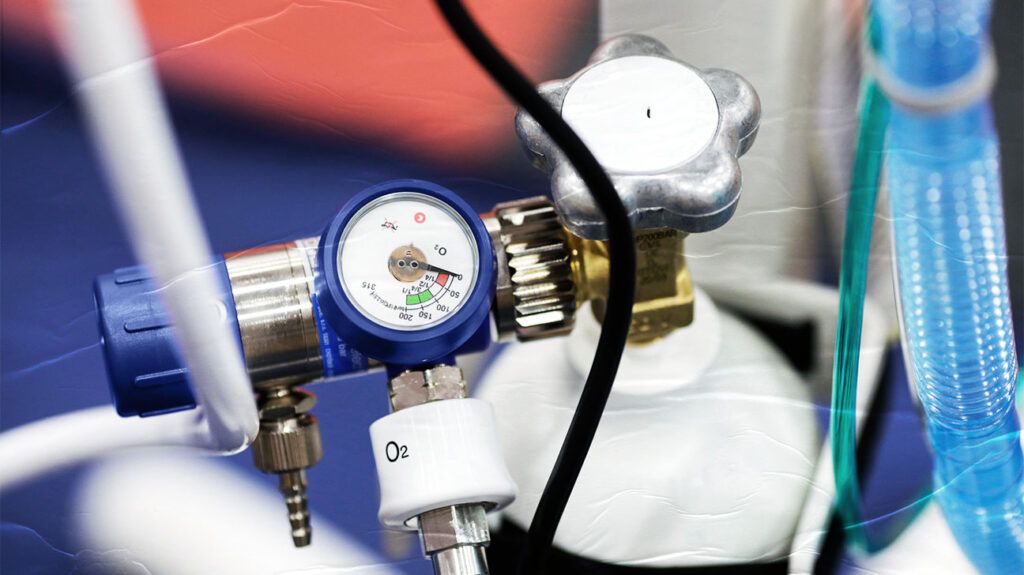ECMO is a life support system that can temporarily take over the work of the heart and lungs, providing the body with oxygen. It can allow the heart and lungs time to rest and heal.
A person may require ECMO if they have a serious health condition, such as heart or lung failure.
This article will discuss ECMO, how it works, the risks, and more.

ECMO is a form of life support that
Doctors may use ECMO to ensure there is enough oxygen in a person’s blood to supply the vital organs. ECMO can also remove carbon dioxide from the blood.
“Extracorporeal” means outside of the body. A membrane oxygenator is a machine that can pump oxygen into the blood. Therefore, ECMO describes an artificial lung that pumps oxygen into the blood from outside the body.
The primary role of ECMO is to allow the heart and lungs time to rest and recover.
Types
There are two types of ECMO: veno-arterial (VA) ECMO and veno-venous (VV) ECMO.
VA ECMO can support both the heart and lungs, while VV ECMO supports the lungs only.
A person may require ECMO if they experience lung or heart failure and other treatments are ineffective.
Several conditions may lead a person to require ECMO. Some of these
- cardiogenic shock, where the heart
cannot pumpTrusted Source enough oxygen to the blood and brain - postcardiotomy shock, which
isTrusted Source heart failure following cardiac surgery - cardiac arrest, when the heart stops pumping blood around the body
- air leak syndrome,
which describesTrusted Source when air leaks to parts of the body that do not typically contain air - viral or bacterial pneumonia
- alveolar proteinosis, a rare infection in the alveoli in the lungs
- severe asthma
- lung injury
A person may also require ECMO in the following instances:
- before, after, or during a lung or heart transplant
- to assist with rest and recovery following heart or lung surgery
- after inhaling excessive smoke
- when there is fluid in the lungs
- when they have severe symptoms of COVID-19
To perform ECMO, a surgeon
During VA ECMO, a surgeon may insert one tube into a vein close to the heart and another into an artery. The blood drains through the tube in the vein into the artificial lung, which adds oxygen and removes carbon dioxide. The artificial lung then pumps the oxygen-rich blood back into the body through the tube in the artery.
During VV ECMO, a surgeon may insert two tubes into two veins close to the heart. The blood drains through one tube into the artificial lung, which adds oxygen and pumps it back into the body through the second tube.
There is also a type of VV ECMO approach in which a healthcare professional places a single tube into a single vein. The blood then drains through the tube into the artificial lung, which adds oxygen, before pumping the blood back through the same vein.
This can be a
Research suggests that ECMO has become a
ECMO can also be beneficial when a person is waiting for a lung or heart transplant and requires temporary support. A doctor may also use ECMO during a lung or heart transplant.
There are several risks of ECMO. Complications
- Bleeding: This is one of the most common risks of ECMO. Bleeding can occur at the site of the cannula insertion and in the following areas:
- lungs
- digestive tract
- mouth and nose
- brain
- abdomen
- Blood clots: During ECMO, the veins may not work as effectively. This may lead to clotting of the blood, which can occur in the veins, heart, and brain.
- Infections: There are several risks of infection during ECMO, including pneumonia. The longer a person requires ECMO, the greater the risks of infection become. Bacteria from the gut can also lead to infections. ECMO can impair the immune system, which may leave a person more vulnerable to infections.
- Ventilation issues: The longer a person requires ECMO, the greater the risks become. As ECMO does the work of the respiratory system, there is a risk of organs such as the diaphragm becoming less effective.
- Acute kidney injury: This is when a person’s kidneys suddenly stop working correctly.
- Neurological complications: A person receiving ECMO may experience seizures. There is also the risk of blood clots forming in or traveling to the brain, which may lead to a stroke.
- Skin ulcers: When a person receives ECMO, they may be unable to move around much for some time. The blood may not reach a person’s organs or extremities as effectively while on ECMO. This can lead to skin breakdown, and ulcers may form.
- Malnutrition: A person may have difficulty maintaining adequate nutrition while on ECMO. This may lead to them developing a form of malnutrition.
The amount of time a person spends on ECMO can vary depending on the underlying condition they have.
A 2019 study involving 487 participants who received ECMO found the median support duration was
In some cases, a person may need to receive ECMO for longer than 28 days. However, the risk of complications can increase the longer a person stays on ECMO.
People who require ECMO typically have a health condition that may be life threatening. Their outlook may depend on the severity of their underlying health condition.
There are also several risks of ECMO that can lead to health complications, such as a stroke, which may affect someone’s outlook.
However,
There is limited research into the long-term survival rates after ECMO.
However, a
ECMO is a potentially lifesaving procedure that can temporarily perform the work of the heart and lungs to give them a chance to rest and recover.
A person that requires ECMO will typically have a life threatening condition such as heart or lung failure or may be waiting for a heart or lung transplant.
ECMO uses tubes to drain blood into an artificial lung, which adds oxygen to the blood before pumping it back into the body.
There are several risks of ECMO and complications that can occur, such as bleeding, blot clots, infections, and a stroke.


